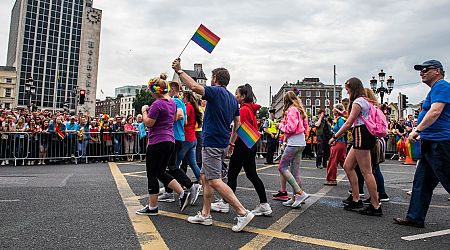EU Asylum and Migration Pact: What is it, why is it controversial and what will it mean for Ireland?
The EU Migration and Asylum Pact has been debated by members states for nearly a decade.

Following months of debate, the EU Pact on Migration and Asylum was passed by a slim margin of just seven votes in the Dáil on Wednesday evening.
The Government parties of Fianna Fáil, Fine Gael and the Green Party were the only ones to support the proposal.
But what exactly is the pact and what will it mean for Ireland?
What does the EU Migration and Asylum Pact contain and what will it mean for Ireland?
The pact is described as a “common EU system to manage migration”. It states it will “secure external borders” and make procedures “fast and efficient”.
READ MORE: 'I'm staying in my home' - Taoiseach Simon Harris responds to bomb threat on family home
READ MORE: Taoiseach questions if Defence Forces members under investigation should serve
There will be tougher border checks and “robust screening” as well as a “border procedure”.
The border procedure will mean asylum seekers are not allowed to enter the State and instead they will be held in reception centres while their applications are being assessed. Applications must be assessed within 12 weeks. The Government has rejected claims that these are akin to “detention centres”. These will be used predominantly when people have “misled” officials, destroyed documents, are a danger to national security or are from countries where fewer than 20% of asylum applications are approved.
The pact will also seek to address “secondary movements”. This is when someone comes to Ireland having sought asylum elsewhere. Under the pact, people can be returned to the first country they sought asylum in.
EU member states will also be obliged to accommodate asylum seekers if other States are having difficulties, particularly EU countries near the Mediterranean. This will be done based on the size of each State. Instead of taking migrants, there will also be an option for countries to provide funding.
Ms McEntee said that Ireland’s current “fair share” amounts to 648 relocations per annum or a financial contribution of €12.96 million.
It is hoped that the pact will lead to faster “returns” for unsuccessful applicants.
What is the background of the Pact?
The pact is an EU-wide agreement designed to regulate migration and asylum across the bloc’s 27 member states. It has been contentious for many years, taking nearly a decade to negotiate.
The migration crisis has been exacerbated in recent years as Italy and Greece came under pressure due to people attempting to cross the Mediterranean.
The pact was agreed in December 2023. The European Parliament voted to adopt the pact in 2024.
In March 2024, Justice Minister Helen McEntee secured Cabinet approval to opt into the pact.
Ireland and Denmark are the only two Member States that had an “opt out”, meaning it must be implemented across the bloc.
Why is the Irish Government in favour of the pact?
The Government, including Minister McEntee, has continued to say that Ireland cannot “go it alone” on migration, with the Justice Minister previously describing it as a “game changer”. It comes following continued pressure on the Irish system due to record-high levels of asylum applications coupled with the arrival of Ukrainian refugees.
In the Dáil last week, Ms McEntee said that if Ireland does not agree to the pact, it will have “no legal basis to return people to other member states.” It also hopes it can speed up the asylum process.
What is the opposition?
There are several reasons why people oppose the pact. Some on the left argue it goes too far, while people on the right say it does not go far enough.
Sinn Féin has said that it does not support the total adoption of the pact as the vast majority of measures were “not in Ireland’s interests”.
It suggests Ireland should have opted out of some aspects. It argues that the decision to sign up an EU-wide agreement means that a certain level of decision-making is taken out of Ireland’s hands. Mary Lou McDonald called it “a dangerous erosion of Irish sovereignty”.
Mattie McGrath told the Dáil that he believed it would “increase numbers of asylum seekers or financial penalties”. He also expressed concerns that Ireland was opting into something it would not be able to opt out of at a later stage.
During the European elections, there were some calls to hold a referendum on the pact.
There has also been strong opposition to the pact from some cohorts on social media, including those who are anti-migrant.
The Labour Party, the Social Democrats and several human rights organisations oppose the pact on human rights grounds.
When does the Pact come into effect?
While the Dáil passed the EU Asylum and Migration Pact this week, it will not come into effect until 2026.
Join the Irish Mirror’s breaking news service on WhatsApp. Click this link to receive breaking news and the latest headlines direct to your phone. We also treat our community members to special offers, promotions, and adverts from us and our partners. If you don’t like our community, you can check out any time you like. If you’re curious, you can read our Privacy Notice.
Related
Share this page
Guest Posts by Easy Branches

































